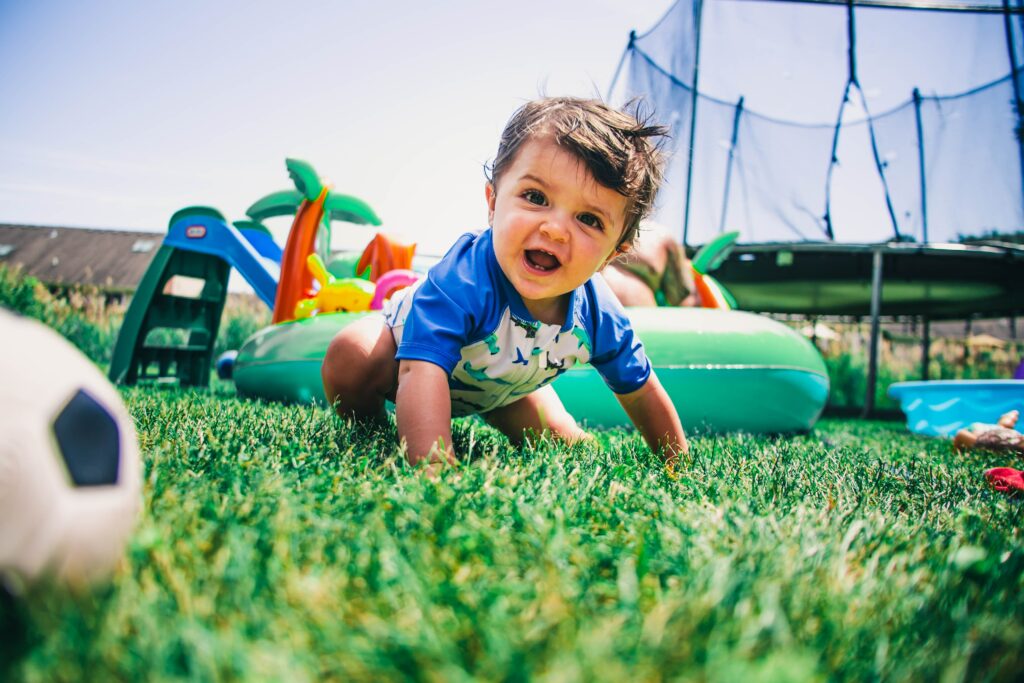Conventional wisdom might call it blog suicide to talk negatively about a practice that 90% of parents probably do with their babies. But, as a therapist, it’s my job to tell you the truth about this common practice and to offer you alternatives to help with your baby’s development. Here are just a few thoughts you should consider.
Sitting babies up and walking them are roadblocks to independent play.
Research shows that free, independent play and a stable, high activity level during the whole period of learning new motor skills is the most effective way to facilitate a healthy baby’s motor development.
Although we probably believe that our well-intentioned manipulation of a baby is helping them, we’re actually restricting them. Premature sitting, standing, and walking are dependent—babies aren’t inclined to enjoy staying this way for very long.

When parents come to us concerned that their infants aren’t reaching milestones like rolling or crawling, it usually turns out that they’ve been restricting their movement in devices, such as infant seats, jumpers, and saucers, or by sitting the baby up. Babies can’t be expected to develop motor skills without the time and freedom to do so. If they’re stuck sitting, infants sometimes even skip other important milestones (rolling, scooting, and crawling).

Awareness and safety go hand in hand. When an infant is placed in this position before they’re able to attain it independently, they usually can’t get out of it without falling, which doesn’t encourage a sense of security or physical confidence.
Walking babies makes them less aware, giving them a false sense of balance and of their abilities. Babies who are given the freedom to move and develop in their own way gain self-knowledge that keeps them safer. With their inner sense of balance and judgment intact, their movements are carefully calculated and they tend to make fewer reckless moves.

Your baby’s spine and hips are very fragile and sensitive until the large muscles develop around them. Only a baby knows just the way their joints should align and will do what’s necessary when their body is ready for it. You can support this strengthening process with various safe exercises, such as by using a fitball, instead of practicing movements that your baby isn’t ready for.

The infant learns of their ability to do something independently, through patient and persistent effort. While learning during motor development to turn on their belly, roll, crawl, sit, stand, and walk, they aren’t only learning those movements but are also learning how to learn. They learn to do something on their own, to be interested in something, to try it out, to experiment. They learn to overcome difficulties. They come to know the joy and satisfaction that can be derived from success, which is the result of patience and persistence.
The habit of premature walking and sitting up creates an unnecessary and unproductive dependency on adults for entertainment. Engaging their parents to repeat the activity becomes a distraction when the child could be happily working on developing motor skills their own way or could be engaged in other more educational, creative, and exploratory self-generated activities.

Babies’ nervous systems have a perfectly written program to succeed at motor development that’s smarter than any of us, so there’s no need to rush or even assist them. Instead of helping your baby move in ways that are unnatural for them, you can gently boost the maturation of their nervous system through smart play, which is what we do here at Hreyfiland in our Snillingafimi classes.


Hreyfiland is a family gym that offers play-based movement development classes led by a qualified child motor development therapist.